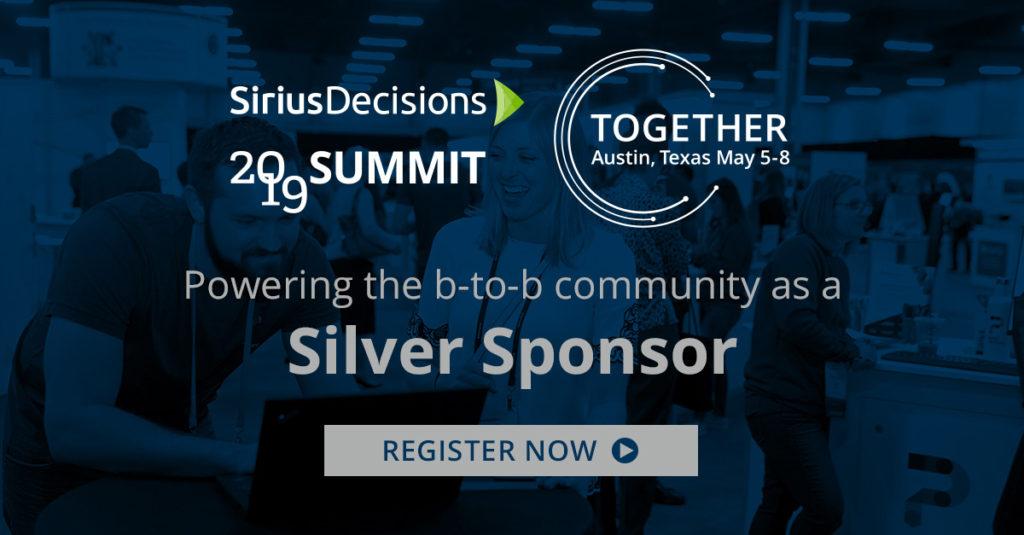On SiriusDecisions Summit and…getting uncomfortable?

Ryan Campion
April 29, 2019

We’re in the final stages of planning our first ever attendance at SiriusDecisions Summit in Austin, and I’m beyond pumped.
As a swag management platform, we help some pretty bright companies with their merch for trade shows. Naturally, we’re excited to showcase some really fun, unique goods at the show.
But more importantly, SiriusDecisions is all about building revenue.
And while any profit-seeking business seeks rapid revenue growth, it can sometimes be uncomfortable when planning the path to get there.
Why does SiriusDecisions Summit make me uncomfortable?
Because up until my role at Printfection, I never personally wielded events as a core marketing channel.
My background lies heavily in demand gen / customer marketing. When it came to planning trade shows, some other team always spearheaded that.
Furthermore, my past employers had been going to shows successfully for a decade, so the channel had already been vetted.
At Printfection, that wasn’t the case. I found myself embarking into unfamiliar (and expensive!) territory. Sponsoring events is no joke.
Every advertising channel comes with inherent risk, but events feel trickier to test.
You can go small and dip your toes in the water by sending just a rep or two, but it’s hard to get a ton of leads this way.
(We have some rockstars on the team who always drum up a couple customers, but they’re particularly talented networking specialists.)
Or you go big, often forking up $10-30K+ for a base level booth sponsorship.
If you’re a company selling software B2B at an average deal size in that neighborhood, and you’re confident enough your target market will be there, it could certainly make sense.
But even if you can “break even” with a handle of deals, there’s significant opportunity cost, especially if you have a small marketing budget.
Should we stay or should we go
When we made the decision to sponsor SiriusDecisions, we had to contend with all these factors and what-ifs.
I feel great about where we landed, but we deliberated a long while to get there.
Yet I remember how stressed I felt when we sponsored our first big show ever, SaaStr Annual, this past February (great show by the way — if you’re a SaaS company, it’s heaps of fun and worth your while).
Despite my fears, we saw tremendous success. It proved to me that embracing discomfort is key to unlocking new channels for growth.
Selecting channels to test
It seems in this age of technology, many of us become ensnared by ‘shiny toy syndrome.’
We look for the latest technology, the newest ABM solution, that flashy cutting-edge AI product.
And then we forget the basic fundamentals, the importance of choosing fewer channels that generate results and doing them really well.
The authors of the book Traction, Gabriel Weinberg and Justin Mares, do a fantastic job articulating this concept.
In their Bullseye methodology, they stress the importance of testing channels until you find something that works. Then you double down until you tap all the growth out of that channel.
Channel selection can be daunting.
What about social? Oooh PR, we need that! Content marketing is key. SEO, who doesn’t benefit from SEO?? Paid search aka SEM aka PPC aka WTF SMH. Woof.
What often happens in the face of too many options is we wind up going with whatever’s most familiar, what we know.
This could be investing in a channel that worked well at another company, or one with which you’ve had personal prior success.
This is a mistake.
What might have worked for you in the past might not be best for what your business needs right now.
So what is one to do?
Thankfully, the solution is to simply start embracing discomfort and to challenge yourself to overcome channel biases.
What you’ve already encountered feels inherently more comfortable, the unknown, scary.
When you feel that unsettling pang of uncertainty — that’s your moment not to shy away, but to dig in.
It’s comparable to when you need to have a difficult conversation with someone. You know it could be unpleasant, but it has to be done.
And more often than not, everything ends up better as a result.
And that leads me back to events and SiriusDecisions Summit.
I didn’t like going to trade shows. Hell, I didn’t even care much for traveling on business.
I held a natural bias against events.
But I couldn’t help but notice whenever we sent our sales rep and CEO to a conference, we landed a couple customers. What could we do with an actual booth?
Furthermore, I saw that events formed a crucial growth strategy of not only our competitors, but myriad B2B software companies.
I couldn’t ignore the clues that events as a channel promised a higher likelihood of return than investing, say, a ton of money into paid search.
Thus we’re doubling down on events. SaaStr Annual demonstrated the fruit shows can bear. SiriusDecisions will be another great test with a bit of a more senior, more marketing-focused audience.
And we’re making sure we give the best effort our budget will allow.
I highlight what worked (and what didn’t!) in a separate post about how we planned for SaaStr Annual.
I touched on pre-event outreach, getting thoughtful with the swag you bring (you can do better than stress balls), and of course, not botching the follow up.
I’ve become an event planner. And as much as it’s been uncomfortable, I feel like a more well-rounded marketing leader as a result.
And I’ve started to enjoy going to shows too — and you really can’t put a price on enjoying what you do.
Will you be at the show?
Let me know! I’d love to see you. We’ll be at booth # 934, right next to Alyce.